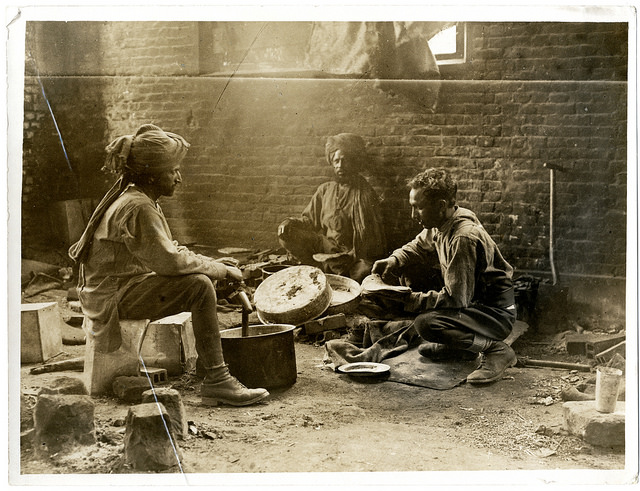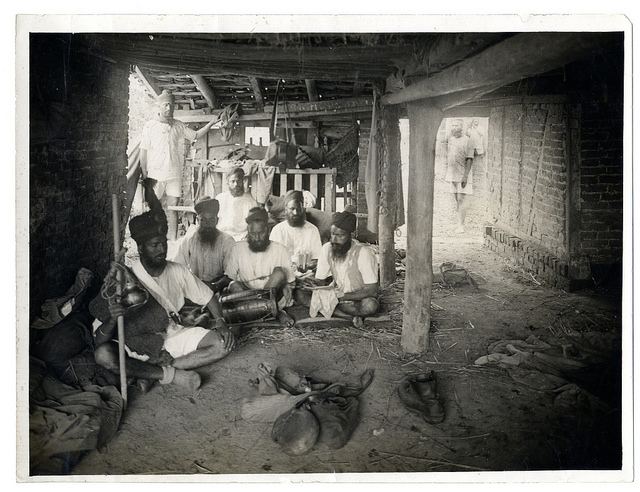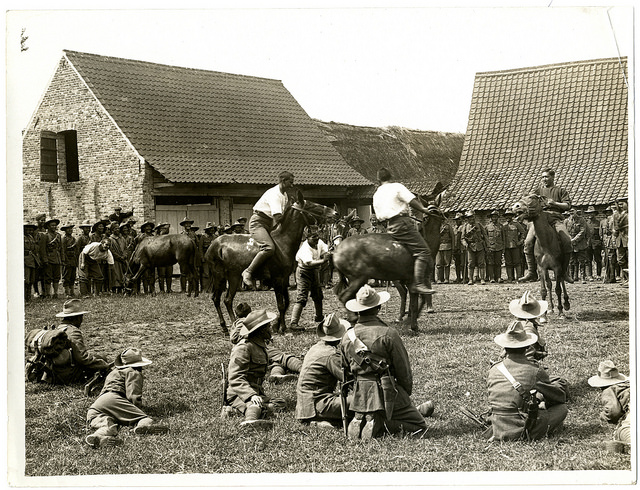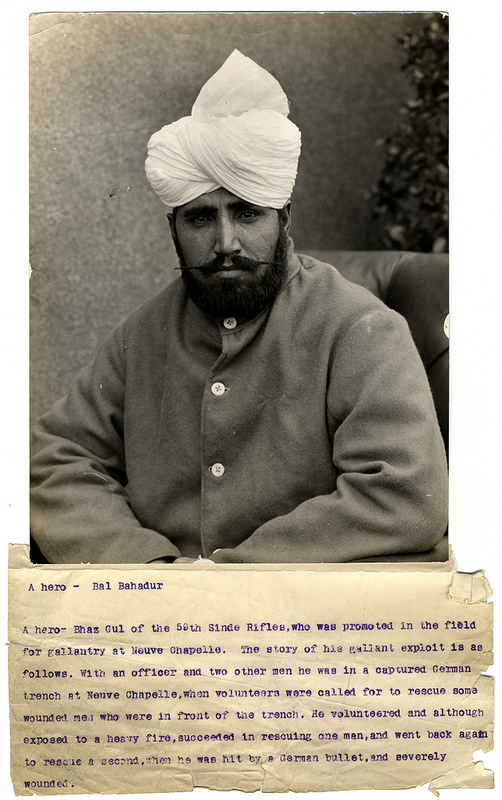third eye
ELITE MEMBER

- Joined
- Aug 24, 2008
- Messages
- 18,519
- Reaction score
- 13
- Country
- Location
In 1915, as World War I lurched into its second year, the British government's India Office reluctantly allowed an American photographer to accompany two infantry units, Lahore and Meerut and the first and second Indian Cavalry Divisions, to the war in France.
The son of an American minister from Ontario, HD Girdwood was something of a veteran India hand. He had first visited the country in 1903 for the Delhi Durbar and returned several times afterwards for more photo assignments. He was in India when the war broke out.
After he pestered officials and promised to contribute his photographs for propaganda, the India Office allowed him to travel to France. He arrived in France on July 22, 1915, having received permission to shoot only for 15 days. He later got permission to photograph Indian soldiers as they recovered from injuries at Bournemouth and Brighton.
Popular cinema suggests that World War I had nothing but a continuous series of soldiers lying in sodden trenches crawling with leeches and lice, who from time to time emerged to shell opposing trenches. This is partly true. Both the Allied Powers’ and Central Powers’ soldiers had begun to entrench themselves as early as September 1914, just two months after the war began, and the last trenches were cleared only after the war ended in 1918.
But soldiers did not spend all their time in the trenches. They regularly retired from the front lines to rest at more securely held ground behind.
The India Office restricted Girdwood to the rear, which is why so many of his photographs depict soldiers at leisure. They cook, wrestle, play music or football. While it later emerged that several of his combat photographs were staged, we don't know whether this was true of the rest of his images. The deceptive tranquility of some of these images might have something do to their eventual use for propaganda. Several of the photographs have extensive captions, written in blandly optimistic tones. These, presumably, were meant to keep spirits up.
This April, the British Library digitised their Girdwood Collection. This is a selection from their archive, along with the original captions.

Indian cavalry playing football at the front, Estrée Blanche, France. July 25, 1915

Indian cavalry troopers preparing a meal, Estrée Blanche, France. July 25, 1915

Sikhs singing religious chants in a French barn, Le Sart. July 24, 1915

Gurkhas wrestling on the regimental transport mules, Le Sart, France. July 24, 1915
The son of an American minister from Ontario, HD Girdwood was something of a veteran India hand. He had first visited the country in 1903 for the Delhi Durbar and returned several times afterwards for more photo assignments. He was in India when the war broke out.
After he pestered officials and promised to contribute his photographs for propaganda, the India Office allowed him to travel to France. He arrived in France on July 22, 1915, having received permission to shoot only for 15 days. He later got permission to photograph Indian soldiers as they recovered from injuries at Bournemouth and Brighton.
Popular cinema suggests that World War I had nothing but a continuous series of soldiers lying in sodden trenches crawling with leeches and lice, who from time to time emerged to shell opposing trenches. This is partly true. Both the Allied Powers’ and Central Powers’ soldiers had begun to entrench themselves as early as September 1914, just two months after the war began, and the last trenches were cleared only after the war ended in 1918.
But soldiers did not spend all their time in the trenches. They regularly retired from the front lines to rest at more securely held ground behind.
The India Office restricted Girdwood to the rear, which is why so many of his photographs depict soldiers at leisure. They cook, wrestle, play music or football. While it later emerged that several of his combat photographs were staged, we don't know whether this was true of the rest of his images. The deceptive tranquility of some of these images might have something do to their eventual use for propaganda. Several of the photographs have extensive captions, written in blandly optimistic tones. These, presumably, were meant to keep spirits up.
This April, the British Library digitised their Girdwood Collection. This is a selection from their archive, along with the original captions.

Indian cavalry playing football at the front, Estrée Blanche, France. July 25, 1915

Indian cavalry troopers preparing a meal, Estrée Blanche, France. July 25, 1915

Sikhs singing religious chants in a French barn, Le Sart. July 24, 1915

Gurkhas wrestling on the regimental transport mules, Le Sart, France. July 24, 1915
Last edited:
















